Varied greens called namul are the most traditional food consumed by Koreans on a daily basis. Recently, namul has attracted international attention thanks to the active introduction of Korean temple food, which is largely based on edible greens. In keeping with the growing vegan trend, high-class restaurants are creating dishes prominently featuring these greens.
Like Germany’s sauerkraut and England’s fish and chips, each country has its own iconic foods. But these foods can be subjective; say, for example, someone can only think of tacos in association with Mexico. Of course, that doesn’t mean tacos are the only quintessentially Mexican food. Instead, it means that person doesn’t know much about what Mexicans actually eat.
Choosing a couple of dishes that represent a country’s culinary tradition spanning centuries is difficult. But if someone names namul as Korea’s representative dish, that person probably knows quite a lot about Korean cuisine.
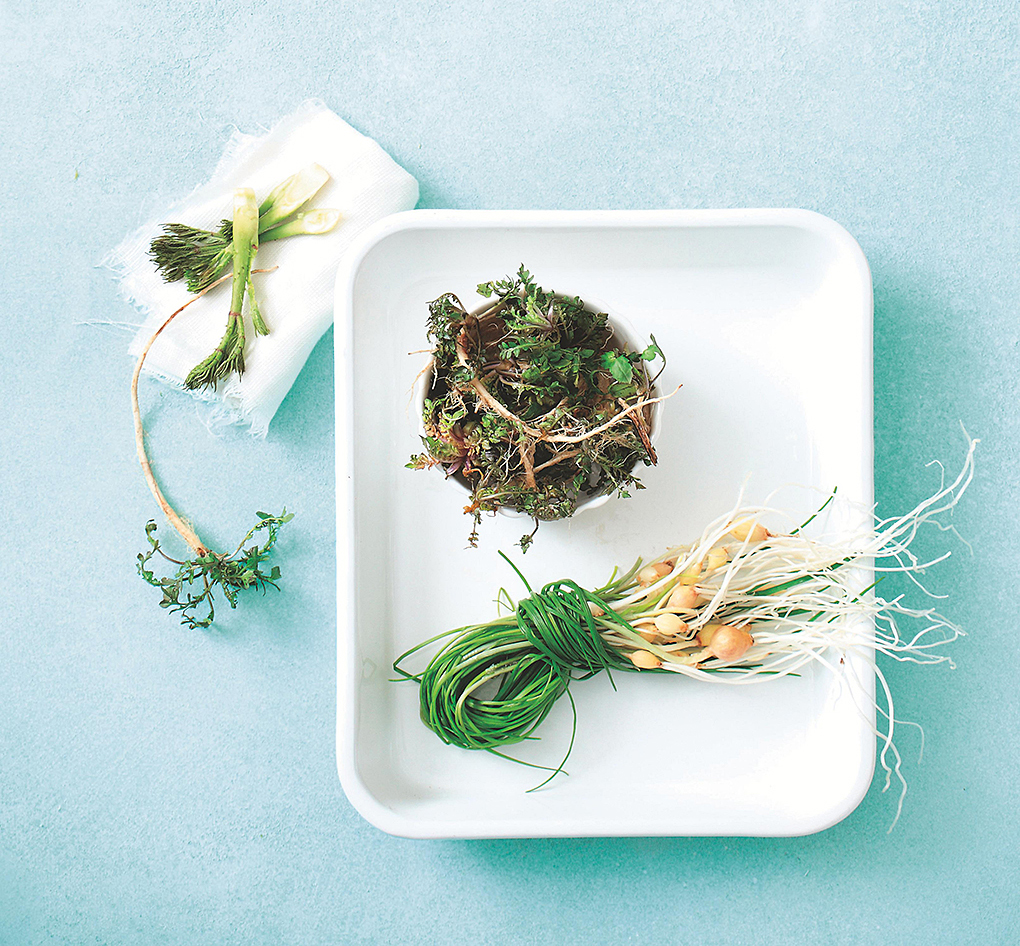
Fatsia shoots, shepherd’s purse and wild chives (fromupper left), Koreans’ favorite spring greens, sprout earlyin the mountains and fields. With their savory taste andaroma, the wild greens help to restore the appetite afterthe long winter. © gettyimages
The Essence of Korean Cuisine
The word “namul” itself is complex in meaning and usage. The Standard Korean Language Dictionary published by the National Institute of the Korean Language lists two meanings. First, namul comprises “all edible plants and leaves,” with fernbrake (gosari), bellflower root (doraji), fatsia shoots (dureup) and shepherd’s purse (naeng-i) given as examples. Second, namul is “a dish of edible plants or leaves which are boiled, stir-fried or raw, and seasoned.”The first definition identifies namul as an ingredient and the second as a prepared dish. As an ingredient, however, namul encompasses more than the plants and leaves mentioned in the dictionary, going as far as to include any vegetable that is prepared in the way of a namul dish. Potatoes or eggplants are considered namul if cut into strips and stir-fried or boiled, and then seasoned with salt or soy sauce, among other condiments. Zucchini and radish can also be eaten as namul if prepared in a similar fashion.On the other hand, both definitions apply to bean sprouts (kongnamul) and mung bean sprouts (sukjunamul). As ingredients, they are sprouts grown in a pot with drainage holes on the bottom (often in a rice cake steamer), and they are also dishes if boiled and seasoned.
Seasonal Food
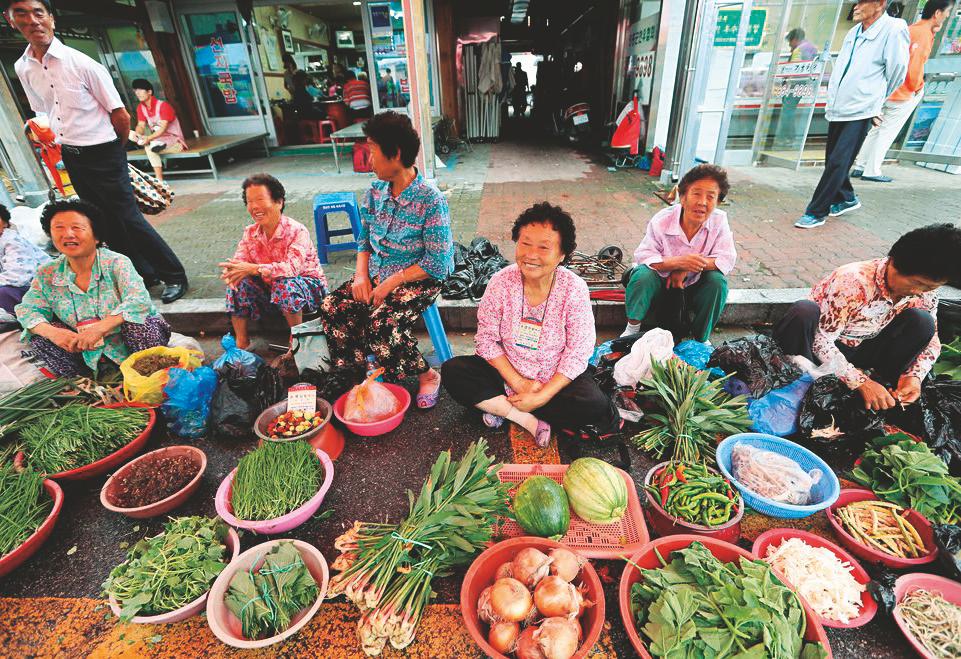
Merchants sell various greens in baskets, a commonscene at traditional markets in spring. More than 300kinds of edible wild greens can be found in Korea. Mostspring greens are rich in Vitamin C and minerals. © Yonhap News Agency
As seen above, namul is a food with complex linguistic implications. Additional knowledge is required, though, to fully understand its lexical definition as “edible plants and leaves.”
First, we need to distinguish between the edible and the inedible. We often hear news of people fighting for their lives after eating poisonous shoots. As namul is a seasonal food, the time at which it is gathered is important. It is largely a spring food precisely because many of these plants can only be eaten as shoots. As they grow, they become tough and hard and are no longer edible. Of course, not all young shoots can be eaten, and in many cases, poison has to be removed first. Wild chives (dallae), y stonecrop (dolnamul), short-fruit pimpinella (chamnamul) and wild aster (chwinamul) have no toxins and can be eaten raw; butfernbrake and daylily (wonchuri) have to be boiled before consumption.
A popular ornamental plant, daylilies give off young shoots in early spring that have a sweet and savory taste. However, these shoots contain colchicine, which is used as medicine due to its anti-inflammatory properties. It relieves symptoms of acute gout and recent research suggests it is also effective in lowering the danger of cardiovascular disorders after a heart attack. But to make daylily shoots suitable for a namul dish, the colchicine has to be removed, or it can lead to vomiting, stomachaches and diarrhea. As colchicine is water soluble, the shoots should be parboiled and left in cold water long enough for the toxin to drain out. As the plant grows, its colchicine content increases, so only young spring shoots can be eaten.
Edible plants that grow wild in the mountains and fields are called san namul (literally “mountain greens”) and more than 300 kinds can be found in Korea. Among them, wild aster alone has some 60 varieties, 24 of which are edible. Therefore, to safely enjoy the range of greens available, a fair amount of knowledge is needed on when to gather and how to prepare them.
Some wild greens can only be tasted in certain regions. Like Kamchatka goat’s beard (samnamul) and Amur wallflower (bujiggaeng-i) which grow on Ulleung Island, some forest plants have been designated under a geographical indication system.
Cooked in Various Ways
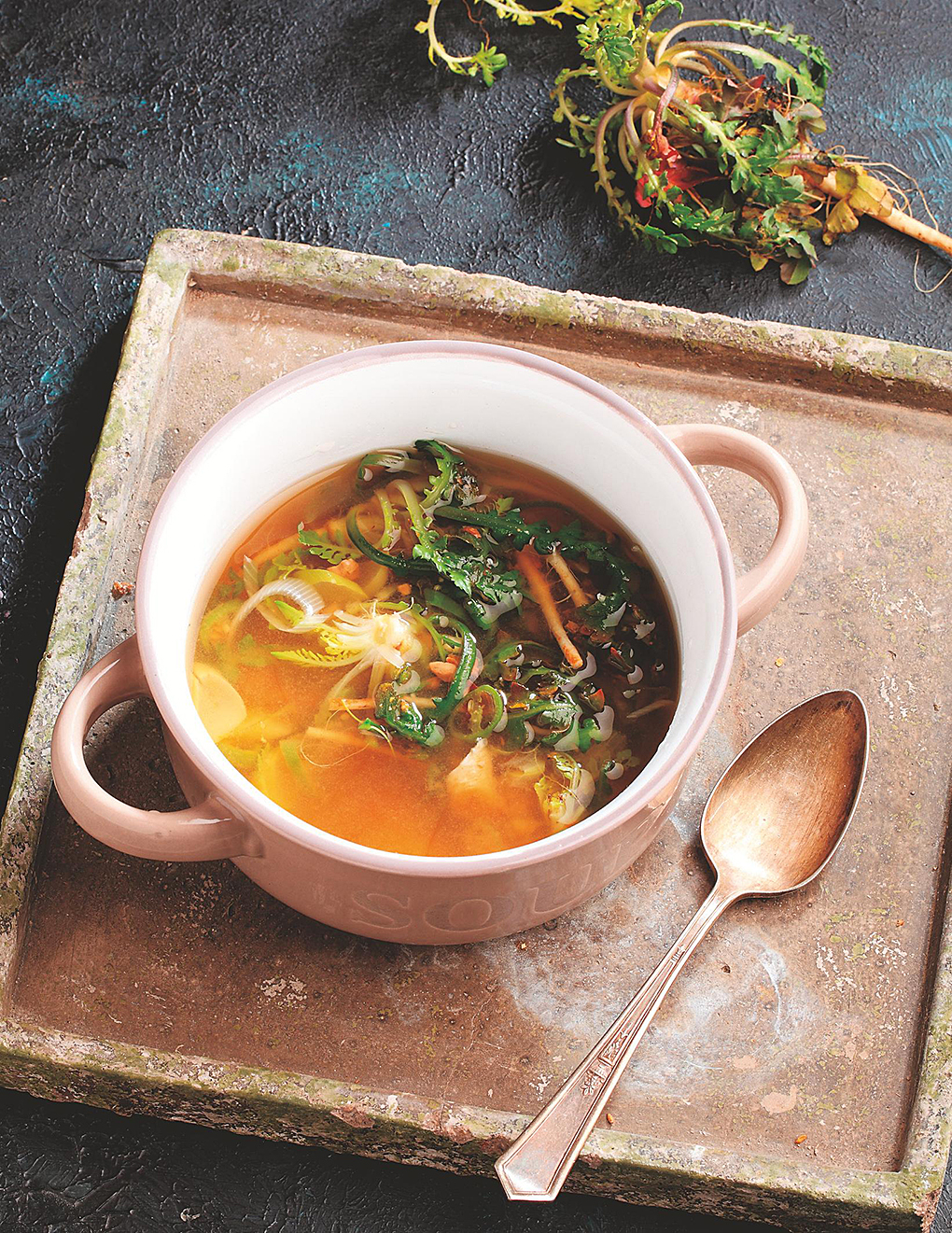
Shepherd’s purse is eaten in soybean paste soup or asa side dish prepared by parboiling and seasoning withsoybean paste, red pepper paste, chopped garlic andgreen onion, sesame seeds, and sesame oil. © gettyimages
There are many ways of preparing namul dishes: parboiling and then soaking in cold water to get rid of the bitterness, stir-frying, leaving for long periods to ripen, seasoning with soy sauce or with soybean paste, adding perilla oil or sesame oil, sprinkling ground and salted sesame seeds or perilla seed powder, or adding a pinch of red chili powder. Depending on the method chosen, the taste and aroma can be as varied as the flowers and plants in the fields. Wild aster has the scent of unripe apples when eaten raw, but a bitter yet savory taste when parboiled and seasoned. Beach silvertop (bangpung), despite its underlying bitterness similar to wild aster, also has a distinctive flavor, like a mixture of tangerine peel and mint.
As for wild chives and shepherd’s purse, the best-known spring greens in Korea, their subtle taste and aroma are hard to describe. Rachel Herz, a cognitive neuroscientist known for her work on the psychology of smell, points out in her book “The Scent of Desire: Discovering Our Enigmatic Sense of Smell” that there are far fewer words used solely for describing olfactory experiences than for any other sensory perception. To be sure, after eating wild chives and shepherd’s purse, you’ll find yourself floundering for words that exactly describe their scent.
Like garlic, wild chives have a pungent taste due to their allicin content, but unlike garlic, they have a refreshing sweetness. Shepherd’s purse, as a member of the mustard family, also has the strong aroma unique to sulfur compounds. But none of this is truly enough for a proper description. A spoonful of soup made with shepherd’s purse and soybean paste tricks me into thinking that I’m standing in a field, smelling the wet soil of an early morning on a day between winter and spring. And of course, tasting wild chives and shepherd’s purse for yourself is a hundred times better than talking about it.
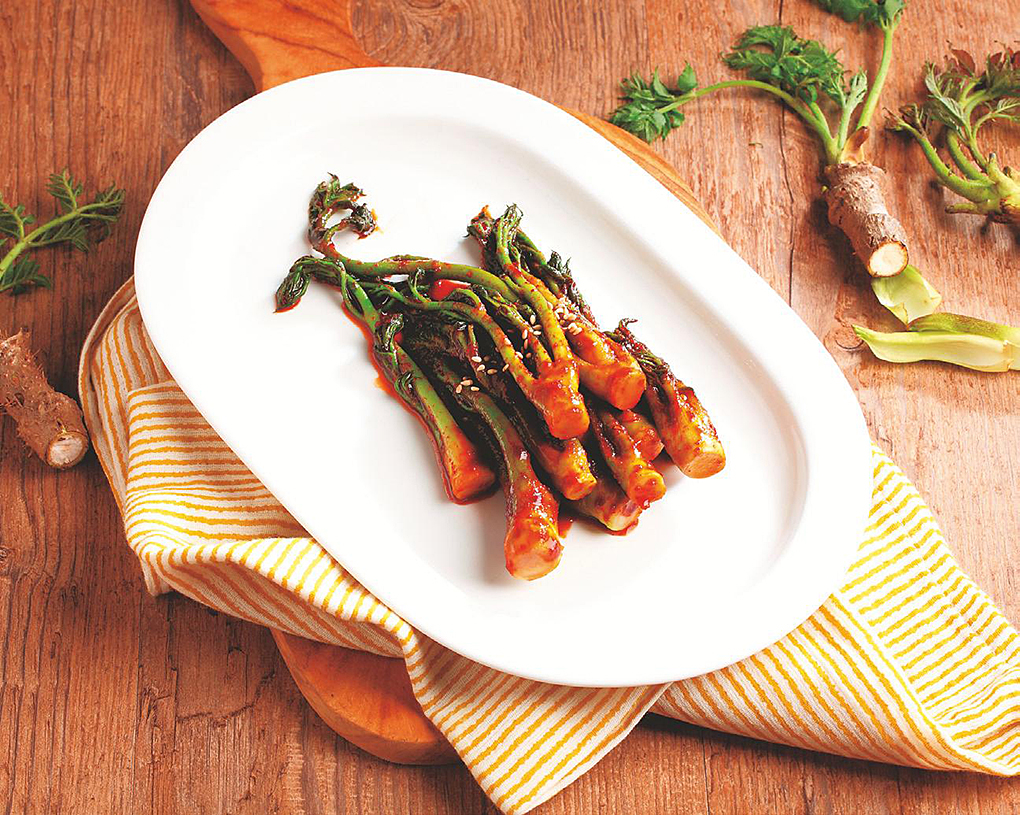
Young fatsia shoots gathered in spring are usuallyparboiled and eaten with a sauce made of red pepperpaste, vinegar and sugar © gettyimages
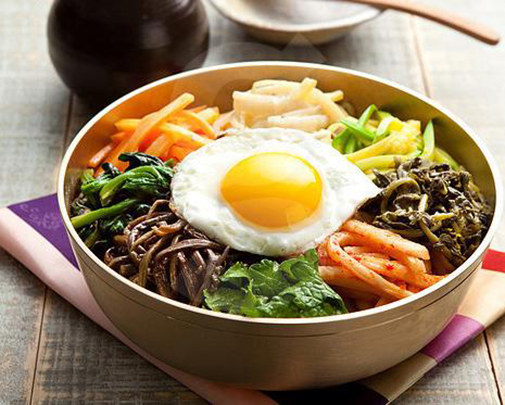
With bibimbap, various kinds of greens can beenjoyed all at once. Rice and assorted greens, toppedwith a fried egg and beef garnish, are all mixed togetherwith red pepper paste and sesame oil before eating. © gettyimages
Aroma of Early Spring
As enjoyable as it is to savor different kinds of namul separately and compare their aromas, another wonderful way to eat them is to mix them with rice, a little red pepper paste (gochujang) and sesame oil, topped with a fried egg. The resulting dish is bibimbap, easily made at home by mixing rice with any namul side dishes already in the fridge. Along with gukbap, the generic name for a variety of dishes consisting of rice in hot soup, bibimbap is one of the oldest dishes served at Korean restaurants. The sweet and spicy flavor of red pepper paste nicely orchestrates the different beats and textures of various greens to bring out new variations in taste.
Some might not like the way bibimbap mixes so many flavors together, but anyone who is knowledgeable about namul will find that this is not a hard concept to accept. And with its mixture of various greens, bibimbap is the essence of Korean food and its philosophy of embracing diversity.
In recent years, namul has tended to be seen in new ways, with corporate-level research being carried out on the flavors of the most popular spring greens enjoyed by Koreans and their methods of preparation. And as more high-class restaurants try to develop new dishes incorporating fresh wild greens, namul is obviously moving on from being the most traditional to the most innovative Korean food.
Jeong Jae-hoonPharmacist and Food Writer